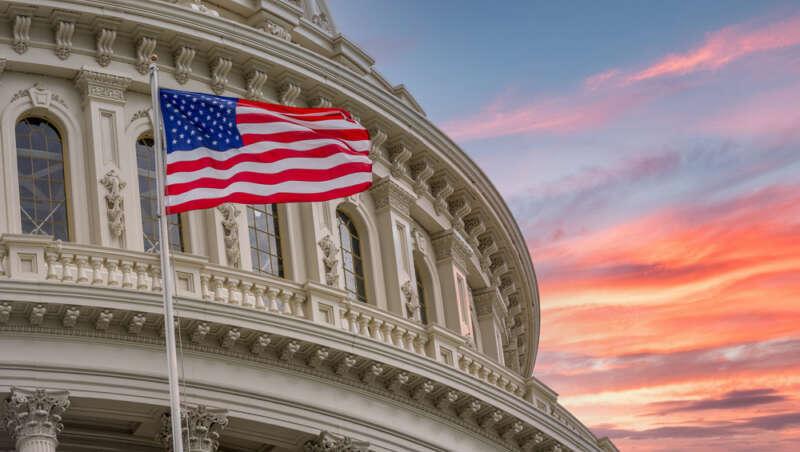In the wake of ongoing budget negotiations and the looming threat of a government shutdown, Rep. Mike Vance has sparked renewed debate by addressing the contentious issue of potential federal employee terminations. Speaking with NBC News, Vance outlined the consequences that a prolonged shutdown could have on the federal workforce, including the unprecedented prospect of federal firings. This development adds a new dimension to the political standoff, raising concerns about its impact on government operations and employee livelihoods.
Vance Addresses Potential Impact of Federal Firings Amid Government Shutdown
Senator Vance emphasized the urgency of addressing the consequences that a prolonged government shutdown could have on federal employees. Speaking before the Senate committee, he highlighted the possibility of widespread firings if budget talks fail to reach a resolution soon, potentially destabilizing various government functions. Vance warned that the impact would not only affect employees but also critical services relied upon by millions of Americans nationwide.
During the discussion, Vance outlined several key areas that could be most vulnerable:
- National security operations potentially facing reduced personnel availability
- Public health programs at risk due to halted funding
- Administrative support functions encountering delays and disruptions
In a detailed table, the senator illustrated the potential timeline and scope of federal workforce reductions if the deadlock persists beyond 30 days:
| Duration of Shutdown | Potential Job Cuts | Impacted Sectors |
|---|---|---|
| 0-10 Days | Minimal | Administrative |
| 11-30 Days | 5,000 – 15,000 | Support and Public Services |
| 31+ Days | 30,000+ | Security, Health, Infrastructure |
Examining Legal and Economic Implications of Federal Employee Terminations
Federal employee terminations during a government shutdown present a complex legal landscape governed by a blend of statutory protections and constitutional considerations. While the Antideficiency Act restricts federal agencies from obligating funds during a shutdown, it does not explicitly authorize firing employees; instead, it mandates furloughs for non-essential personnel. However, the prospect of permanent terminations opens debates about due process rights under the Fifth Amendment, collective bargaining agreements, and the potential for litigation challenging arbitrary or politically motivated dismissals.
Economically, the ripple effects of such firings extend beyond immediate personnel cuts. Key considerations include:
- Impact on consumer confidence: A wave of federal layoffs could undermine public trust in governmental stability.
- Local economies: Many federal workers contribute substantially to regional spending; job losses risk contraction in communities near federal facilities.
- Long-term costs: Severance, unemployment benefits, and rehiring expenses may outweigh short-term budgetary savings.
| Aspect | Potential Effect |
|---|---|
| Legal Challenges | Increased lawsuits citing wrongful termination |
| Budget Savings | Short-term reduction in payroll expenses |
| Operational Impact | Reduced government service capacity |
| Employee Morale | Decline leading to retention issues |
Strategies for Mitigating Workforce Disruption During Prolonged Shutdowns
To navigate the challenges posed by extended government shutdowns, agencies must prioritize clear communication and flexible resource management. Establishing contingency plans that include remote work capabilities and reallocation of duties helps maintain operational continuity despite reduced staff. Equipping employees with cross-training opportunities not only fosters adaptability but also ensures that critical functions are covered when key personnel are furloughed or absent.
Effective strategies often emphasize:
- Implementation of staggered work schedules to minimize disruption
- Deployment of temporary contract workers for specialized roles
- Leveraging technology to automate routine tasks
- Providing mental health and financial support to affected employees
- Regular updates from leadership to maintain morale and transparency
| Mitigation Approach | Benefits | Challenges |
|---|---|---|
| Cross-Training Programs | Increased workforce flexibility | Additional training time required |
| Remote Work Infrastructure | Continuity of operations | Requires cybersecurity measures |
| Temporary Staffing | Maintains staffing levels | Cost and onboarding delays |
Future Outlook
As the possibility of federal firings looms amid the ongoing government shutdown, Vance’s remarks underscore the high stakes facing federal employees and the broader implications for government operations. With negotiations still underway, the coming days will be critical in determining whether a resolution can be reached to avoid further disruptions. NBC News will continue to monitor developments closely and provide updates on this evolving situation.
